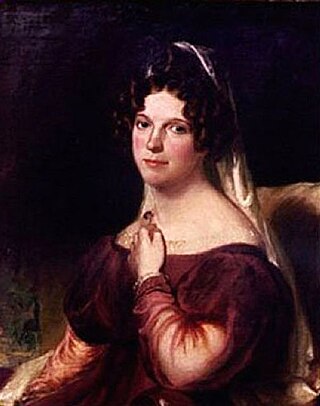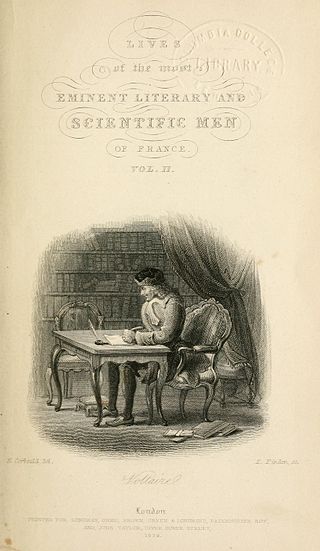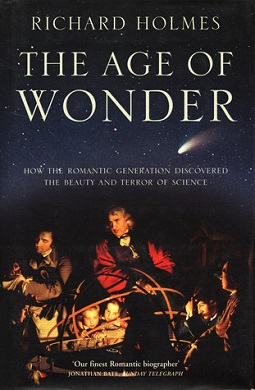
Felicia Dorothea Hemans was an English poet. Two of her opening lines, "The boy stood on the burning deck" and "The stately homes of England", have acquired classic status.

Sir Henry Taylor was an English dramatist and poet, Colonial Office official, and man of letters.

Meyer Howard Abrams, usually cited as M. H. Abrams, was an American literary critic, known for works on romanticism, in particular his book The Mirror and the Lamp. Under Abrams's editorship, The Norton Anthology of English Literature became the standard text for undergraduate survey courses across the U.S. and a major trendsetter in literary canon formation.
Western literature, also known as European literature, is the literature written in the context of Western culture in the languages of Europe, and is shaped by the periods in which they were conceived, with each period containing prominent western authors, poets, and pieces of literature.
Nationality words link to articles with information on the nation's poetry or literature.
Betty T. Bennett (1935–2006) was Distinguished Professor of Literature and Dean of the College of Arts and Sciences (1985–1997) at American University. She was previously Dean of the School of Liberal Arts and Sciences and acting provost of Pratt Institute from 1979 to 1985. Among her numerous awards and honors, Bennett was a fellow of the National Endowment for the Humanities and fellow of American Council of Learned Societies. She won the Keats-Shelley Association of America - Distinguished Scholar Award in 1992 and was Founding President, Phi Beta Kappa, Zeta Chapter at American University. Born in Brooklyn, New York, Bennett graduated from Brooklyn College magna cum laude and later received a master's degree (1962) and PhD (1970) in English and American literature from New York University.
Richard Marggraf Turley is a British literary critic, poet and novelist. He specialises in Romanticism and the poetry of John Keats, surveillance studies and ecocriticism. He is professor of English Literature at Aberystwyth University, and between 2013 and 2018 was that institution's Professor of Engagement with the Public Imagination.

This is a bibliography of works by Mary Shelley, the British novelist, short story writer, dramatist, essayist, biographer, and travel writer, best known for her Gothic novel Frankenstein: or, The Modern Prometheus (1818). She also edited and promoted the works of her husband, the Romantic poet and philosopher Percy Bysshe Shelley. Until the 1970s, Mary Shelley was known mainly for her efforts to publish Percy Shelley's works and for Frankenstein. Recent scholarship has yielded a more comprehensive view of Mary Shelley’s achievements, however. Scholars have shown increasing interest in her literary output, particularly in her novels, which include the historical novels Valperga (1823) and Perkin Warbeck (1830), the apocalyptic novel The Last Man (1826), and her final two novels, Lodore (1835) and Falkner (1837). Studies of her lesser-known works such as the travel book Rambles in Germany and Italy (1844) and the biographical articles for Dionysius Lardner's Cabinet Cyclopaedia (1829–46) support the growing view that Mary Shelley remained a political radical throughout her life. Mary Shelley's works often argue that cooperation and sympathy, particularly as practised by women in the family, were the ways to reform civil society. This view was a direct challenge to the individualistic Romantic ethos promoted by Percy Shelley and Enlightenment political theories.

The Lives of the Most Eminent Literary and Scientific Men comprised ten volumes of Dionysius Lardner's 133-volume Cabinet Cyclopaedia (1829–1846). Aimed at the self-educating middle class, this encyclopedia was written during the 19th-century literary revolution in Britain that encouraged more people to read.

Frankenstein; or, The Modern Prometheus is an 1818 novel written by English author Mary Shelley. Frankenstein tells the story of Victor Frankenstein, a young scientist who creates a sapient creature in an unorthodox scientific experiment. Shelley started writing the story when she was 18, and the first edition was published anonymously in London on 1 January 1818, when she was 20. Her name first appeared in the second edition, which was published in Paris in 1821.

History of a Six Weeks' Tour through a part of France, Switzerland, Germany, and Holland; with Letters Descriptive of a Sail Round the Lake of Geneva and of the Glaciers of Chamouni is a travel narrative by the English Romantic authors Mary Shelley and Percy Bysshe Shelley. Published anonymously in 1817, it describes two trips taken by Mary, Percy, and Mary's stepsister, Claire Clairmont: one across Europe in 1814, and one to Lake Geneva in 1816. Divided into three sections, the text consists of a journal, four letters, and Percy Shelley's poem "Mont Blanc". Apart from the poem, preface, and two letters, the text was primarily written and organised by Mary Shelley. In 1840 she revised the journal and the letters, republishing them in a collection of Percy Shelley's writings.

Michael O'Neill was an English poet and scholar, specialising in the Romantic period and post-war poetry. He published four volumes of original poetry; his academic writing was praised as "beautifully and lucidly written".

The Age of Wonder: How the Romantic Generation Discovered the Beauty and Terror of Science is a 2008 popular biography book about the history of science written by Richard Holmes. In it, the author describes the scientific discoveries of the polymaths of the late eighteenth century and how this period formed the basis for modern scientific discoveries. Holmes, a literary biographer, also looks at the influence of science on the arts in the Romantic era. The book won the 2009 Royal Society Prize for Science Books, the 2009 National Book Critics Circle Award for General Nonfiction, and the 2010 National Academies Communication Award.

The sonnet was a popular form of poetry during the Romantic period: William Wordsworth wrote 523, John Keats 67, Samuel Taylor Coleridge 48, and Percy Bysshe Shelley 18. But in the opinion of Lord Byron sonnets were “the most puling, petrifying, stupidly platonic compositions”, at least as a vehicle for love poetry, and he wrote no more than five.

Mary Wollstonecraft Shelley was an English novelist who is best known for writing the Gothic novel Frankenstein; or, The Modern Prometheus (1818), which is considered an early example of science fiction. She also edited and promoted the works of her husband, the Romantic poet and philosopher Percy Bysshe Shelley. Her father was the political philosopher William Godwin and her mother was the philosopher and women's rights advocate Mary Wollstonecraft.
Jeffrey N. Cox is Arts and Sciences Professor of Distinction in English Literature and Humanities and Chair of the Department of English at the University of Colorado Boulder. He is the author or editor of ten books and more than forty scholarly articles. Cox specializes in English and European Romanticism, cultural theory, and cultural studies. He is a leading scholar of late eighteenth- to early nineteenth-century drama and theater; of the Cockney School of poets, which included, among others, John Keats, Percy Shelley, and Leigh Hunt; and of the poetry of William Wordsworth.
Walter Sholto Douglas (1790–1830), born under the name Mary Diana Dods, was a Scottish writer of books, stories and other works. Despite being assigned a female identity, Douglas lived as a man in his private, public, and work life. Most of his works appeared under the pseudonym David Lyndsay. His name may have been partly inspired by his grandfather's name, Sholto Douglas, 15th Earl of Morton. He was a close friend and confidant of Mary Shelley, and the husband of Isabella Robinson. In 1980, scholar Betty T. Bennett sensationally outed Douglas, connecting his deadname with his writing pseudonym.

Romanticism was an artistic, literary, and intellectual movement that originated in Europe toward the end of the 18th century. Scholars regard the publishing of William Wordsworth's and Samuel Coleridge's Lyrical Ballads in 1798 as probably the beginning of the movement in England, and the crowning of Queen Victoria in 1837 as its end. Romanticism arrived in other parts of the English-speaking world later; in the United States, about 1820.
Tilar J. Mazzeo is an American-Canadian cultural historian, wine writer, and author of bestselling works of narrative nonfiction.
Dorothy Hewlett was an English scholar specialising in 19th century literature, a novelist and playwright. Known for her stewardship of the Keats-Shelley Memorial Bulletin, she was a winner of the Rose Mary Crawshay Prize (1938) and a Fellow of the Royal Society of Literature.











